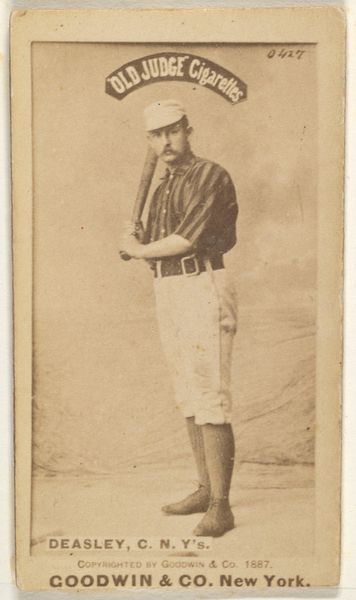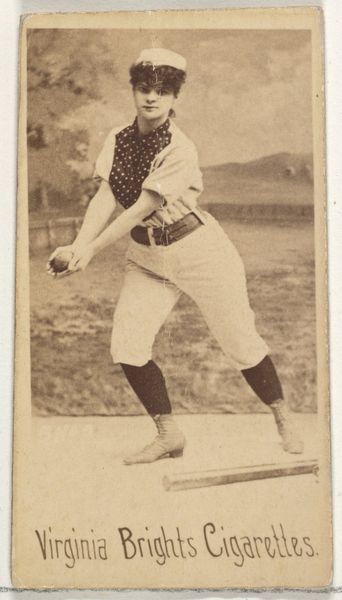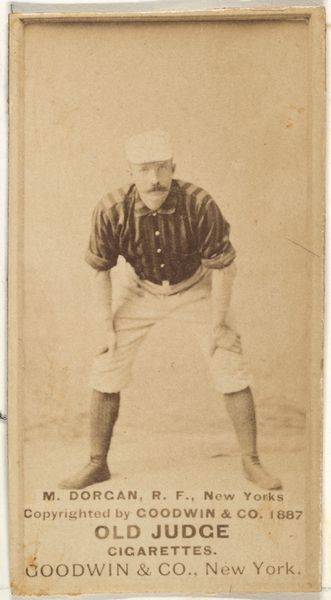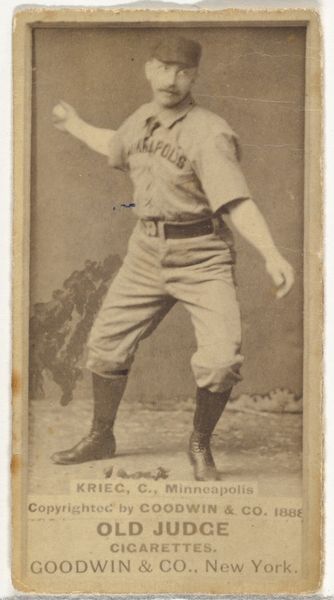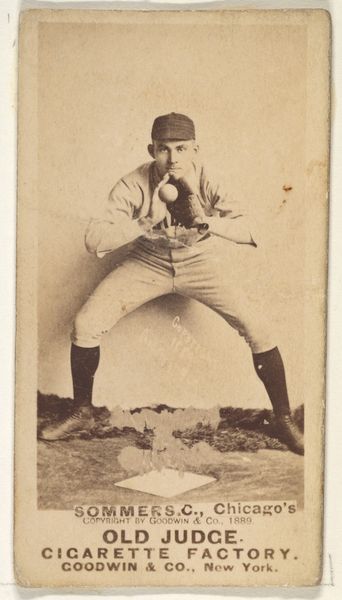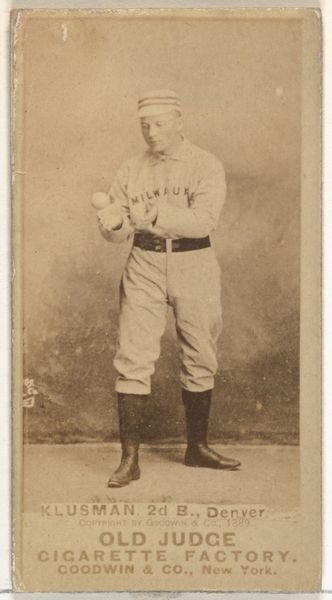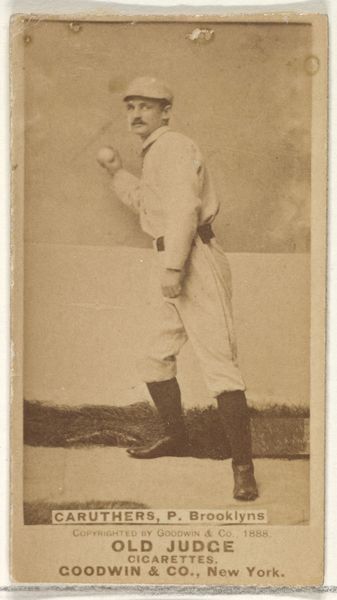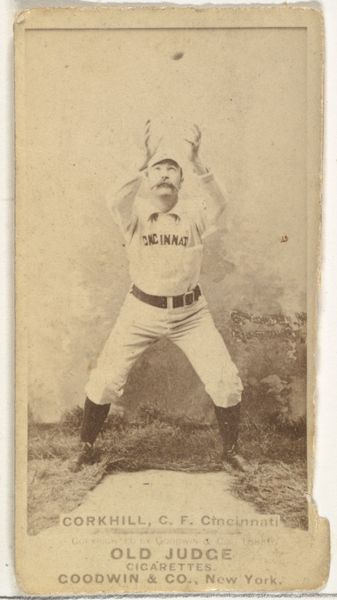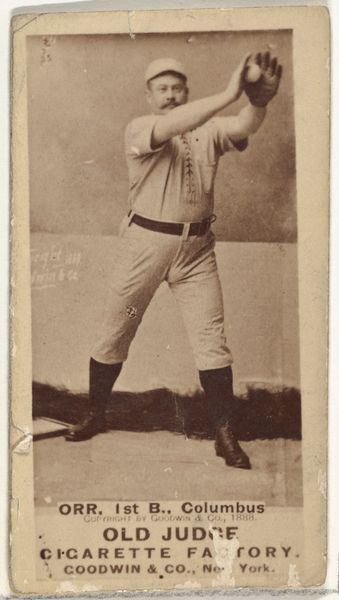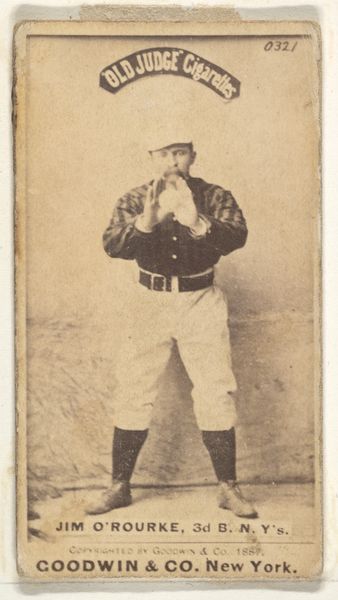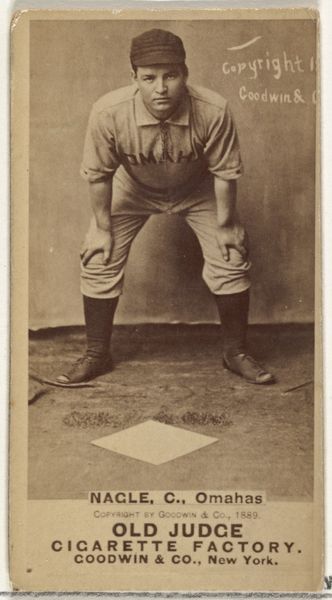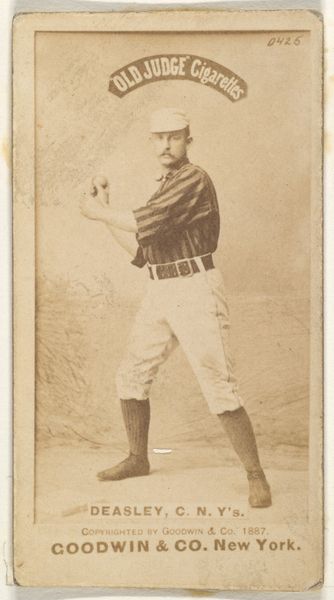
Card 8, from the Girl Baseball Players series (N48, Type 1) for Virginia Brights Cigarettes 1886 - 1888
0:00
0:00
drawing, print, photography
#
portrait
#
drawing
# print
#
impressionism
#
baseball
#
photography
#
athlete
Dimensions: Sheet: 2 3/4 x 1 3/8 in. (7 x 3.5 cm)
Copyright: Public Domain
Editor: This is "Card 8, from the Girl Baseball Players series (N48, Type 1) for Virginia Brights Cigarettes," made by Allen & Ginter between 1886 and 1888. The sepia tone and the subject’s pose give it a very grounded, almost defiant feel. How do you interpret this work? Curator: What I see is a deliberate disruption of late 19th-century gender roles, subtly packaged within a consumer product. The image normalizes the presence of women athletes. Considering the era's constraints, this challenges patriarchal structures by showcasing women engaging in activities traditionally reserved for men. Who was this imagery aimed toward, and what statement do you think it makes for women today? Editor: I imagine these cards were marketed primarily to men, right? Perhaps meant as a novelty, but I agree, the image itself feels quite powerful, especially looking back from our contemporary lens. The cigarette brand feels almost incidental. Curator: Exactly. Cigarette cards like these were precursors to modern trading cards, tucked into cigarette packs to stiffen them and promote the brand. Yet, they inadvertently became agents of social commentary. The very act of including women baseball players alongside images of traditionally "masculine" subjects subtly subverts prevailing norms. This is an early, almost accidental, form of feminist representation in popular culture. Where do you think such visibility may have sparked conversations among varied social groups at the time? Editor: It must have been quite radical! I bet it stirred conversations—perhaps sparking both inspiration and outrage. The simple existence of the card challenges narratives around women's capabilities and roles in society, leading people to reconsider fixed definitions of gender and athleticism. I now see it as a radical statement hidden in plain sight. Thanks! Curator: Absolutely! Viewing art as a site of social and political dialogue helps us unpack layers of meaning often overlooked. It reminds us that art can be a quiet revolutionary.
Comments
No comments
Be the first to comment and join the conversation on the ultimate creative platform.
